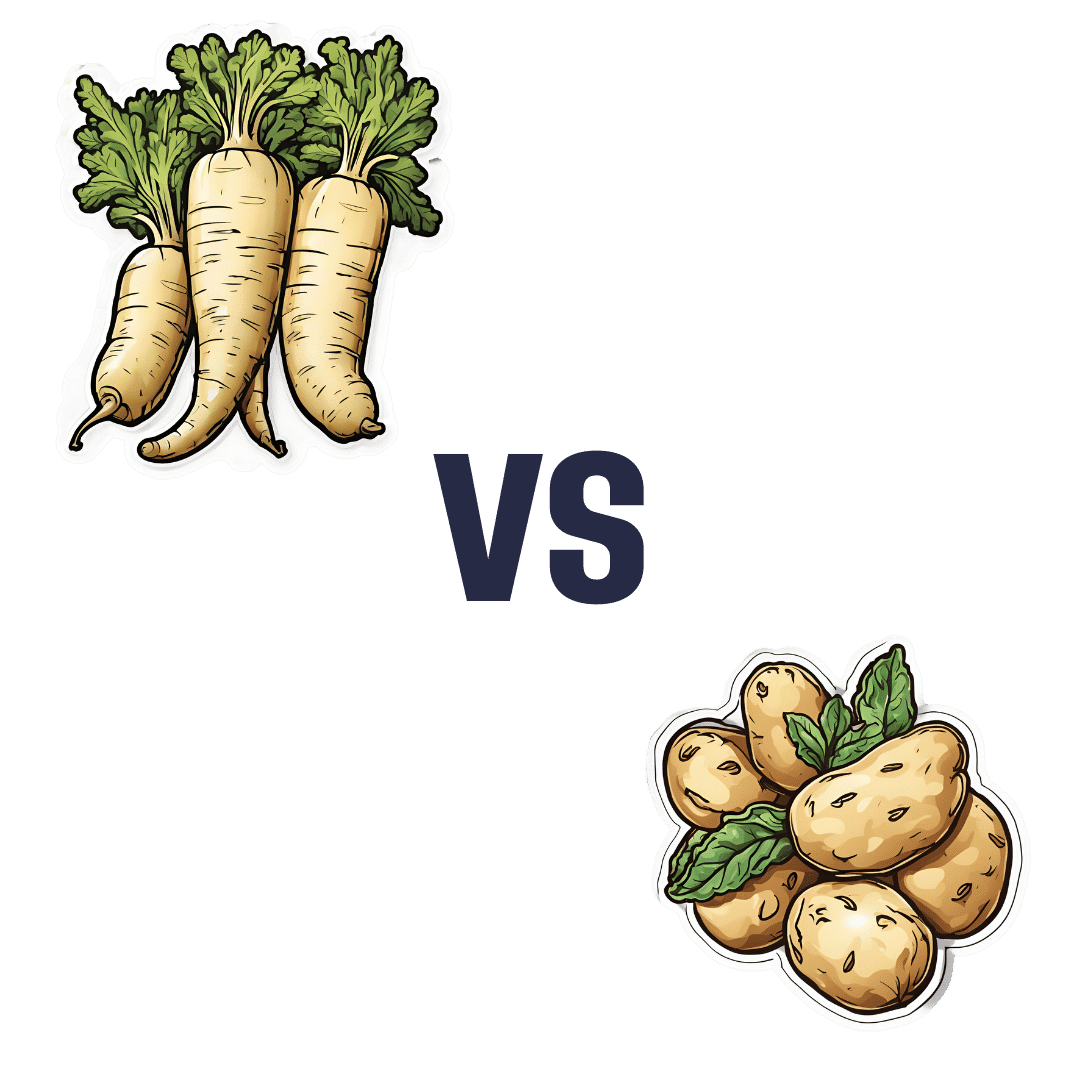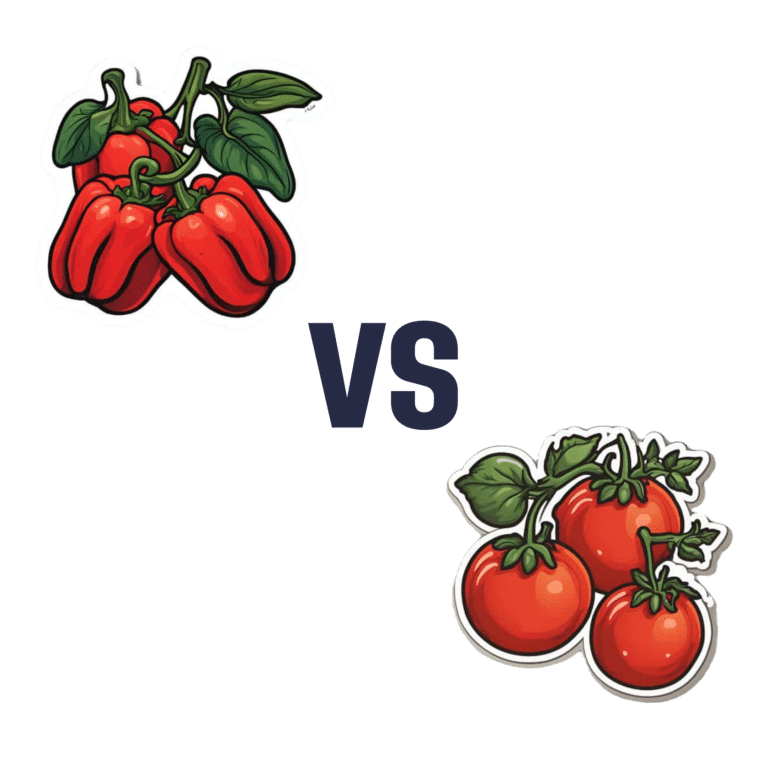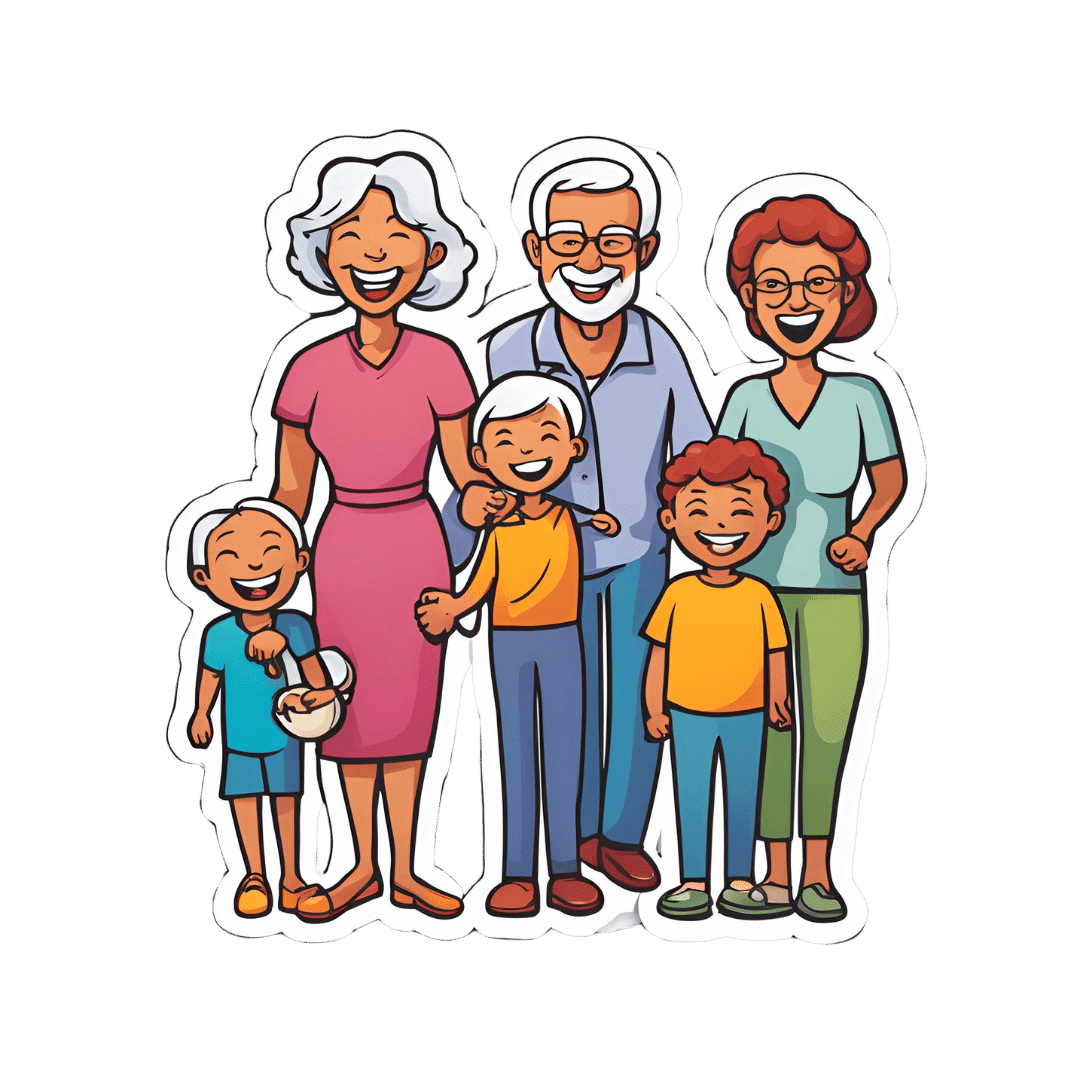
Parsnips vs Potatoes – Which is Healthier?
10almonds is reader-supported. We may, at no cost to you, receive a portion of sales if you purchase a product through a link in this article.
Our Verdict
When comparing parsnips to potatoes, we picked the parsnips.
Why?
To be more specific, we’re looking at russet potatoes, and in both cases we’re looking at cooked without fat or salt, skin on. In other words, the basic nutritional values of these plants in edible form, without adding anything. With this in mind, once we get to the root of things, there’s a clear winner:
Looking at the macros first, potatoes have more carbs while parsnips have more fiber. Potatoes do have more protein too, but given the small numbers involved when it comes to protein we don’t think this is enough of a plus to outweigh the extra fiber in the parsnips.
In the category of vitamins, again a champion emerges: parsnips have more of vitamins B1, B2, B5, B9, C, E, and K, while potatoes have more of vitamins B3, B6, and choline. So, a 7:3 win for parsnips.
When it comes to minerals, parsnips have more calcium copper, manganese, selenium, and zinc, while potatoes have more iron and potassium. Potatoes do also have more sodium, but for most people most of the time, this is not a plus, healthwise. Disregarding the sodium, this category sees a 5:2 win for parsnips.
In short: as with most starchy vegetables, enjoy both in moderation if you feel so inclined, but if you’re picking one, then parsnips are the nutritionally best choice here.
Want to learn more?
You might like to read:
- Why You’re Probably Not Getting Enough Fiber (And How To Fix It)
- Should You Go Light Or Heavy On Carbs?
Take care!
Don’t Forget…
Did you arrive here from our newsletter? Don’t forget to return to the email to continue learning!
Recommended
Learn to Age Gracefully
Join the 98k+ American women taking control of their health & aging with our 100% free (and fun!) daily emails:
-
Soy Allergy? No Problem! Turn Any Legume Into Tofu (Here’s How)
10almonds is reader-supported. We may, at no cost to you, receive a portion of sales if you purchase a product through a link in this article.
Legumes have similar chemical composition, which means they can generally be used in the same ways as each other:
Variety is the spice of life
In the video, he demonstrates this with green peas, red lentils, and green lentils, and mentions that it is the same for chickpeas too. The process is:
- Soak 100g dried legumes overnight in plenty of water.
- Drain and blend with 250ml fresh water until smooth.
- Pour into a nonstick frying pan, add ½ tsp salt, and stir.
- Cook until it thickens into a paste, then cook for another 2–3 minutes on low heat.
- Transfer to a 500ml mold, smooth the top, and set in the fridge for 1 hour.
- If properly set, it can be eaten as-is or fried into crispy cubes.
- Stir-fry tofu with: ginger, spring onions, garlic, and chili.
- Sauce: suggestions include soy sauce, rice wine vinegar, mirin, sesame oil.
- Garnish with: sesame and coriander seeds
Science behind it: heating alters protein bonds and starches, forming a thick paste that sets.
Note: legumes contain natural toxins that are destroyed by cooking. For some, like those mentioned above, frying for a few minutes is sufficient. However, kidney beans are high in phytohemagglutinin, which requires at least 20 minutes of cooking to be safe, making them unsuitable for this process.
For more on all of this, plus visual demonstrations, enjoy:
Click Here If The Embedded Video Doesn’t Load Automatically!
Want to learn more?
You might also like to read:
Six Ways To Eat For Healthier Skin
Take care!
Share This Post
-
Ras El-Hanout
10almonds is reader-supported. We may, at no cost to you, receive a portion of sales if you purchase a product through a link in this article.
This is a spice blend, and its name (رأس الحانوت) means “head of the shop”. It’s popular throughout Morocco, Algeria, and Tunisia, but can often be found elsewhere. The exact blend will vary a little from place to place and even from maker to maker, but the general idea is the same. The one we provide here today is very representative (and for an example of its use, see our Marrakesh Sorghum Salad recipe!).
Note: we’re giving all the quantities in whole tsp today, to make multiplying/dividing easier if you want to make more/less ras el-hanout.
You will need
- 6 tsp ground ginger
- 6 tsp ground coriander seeds
- 4 tsp ground turmeric
- 4 tsp ground sweet cinnamon
- 4 tsp ground cumin
- 2 tsp ground allspice ← not a spice mix! This is the name of a spice!
- 2 tsp ground cardamom
- 2 tsp ground anise
- 2 tsp ground black pepper
- 1 tsp ground cayenne pepper
- 1 tsp ground cloves
Note: you may notice that garlic and salt are conspicuous by their absence. The reason for this is that they are usually added separately per dish, if desired.
Method
1) Mix them thoroughly
That’s it! Enjoy!
Want to learn more?
For those interested in some of the science of what we have going on today:
- Our Top 5 Spices: How Much Is Enough For Benefits?
- A Tale Of Two Cinnamons ← this is important, to understand why it’s critical to use sweet cinnamon specifically
- Sweet Cinnamon vs Regular Cinnamon – Which is Healthier? ← not even exaggerating; one is health-giving and the other contains a compound that is toxic at 01.mg/kg; guess which one is easier to find in the US and Canada?
Take care!
Share This Post
-
Do You Have A Personalized Health Plan? (Here’s How)
10almonds is reader-supported. We may, at no cost to you, receive a portion of sales if you purchase a product through a link in this article.
“Good health” is quite a broad umbrella, and while we all have a general idea of what “healthy” looks like, it’s easy to focus on some areas and overlook others.
Of course, how much one does this will still depend on one’s level of interest in health, which can change over the course of life, and (barring serious midlife health-related curveballs such as a cancer diagnosis or something) often looks like an inverse bell curve:
- As small kids, we probably barely thought about health
- As teenagers, we probably had a narrow view of health (often related to whatever is considered sexually attractive at the time)
- In our 20s, may have a bit of a health kick in which we learn and apply a lot… Which often then gets to later take a bit of a back seat to work responsibilities and so forth
- This is commonly followed by a few decades of just trying to make it to Friday by any means necessary (definite risk factor for substance abuse of various kinds), double if we have kids, triple if we have work, kids, and are also solely responsible for managing the household.
- Then just as suddenly as it is predictably, we are ambushed when approaching retirement age by a cluster of age-related increased health risks that we now get to do our best to mitigate—the focus here is “not dying early”. A lot of health education occurs at this time.
- Finally, upon retirement, we actually get the time to truly focus on our health again, and now it’s easier to learn about all aspects of health, even if now there’s a need to juggle many health issues all at once, most of which affect the others.
See also: How Likely Are You To Live To 100? ← in which we can also see a graph of 10almonds subscribers’ ages, consistent with the above
So, let’s recap, and personalize our health plan
There are often things we wish we could have focused on sooner, so now’s the time to figure out what future-you in your next decade (or later!) is going to thank you for having done now.
So, while 20-year-old us might have been focusing on fat levels or athletic performance, how much does that really help us now? (With apologies to any readers in their 20s, but also, with the bonus for you: now’s the perfect time to plan ahead!)
At 10almonds, while we cover very many health topics, we often especially focus on:
- Brain health
- Heart health
- Gut health
…because they affect everything else so much. We’ve listed them there in the order they appear in the body, but in fact it can be useful to view them upside down, because:
- Gut health is critical for good metabolic health (a happy efficient gut allows us to process nutrients, including energy, efficiently)
- Metabolic health is critical for good heart health (a nicely ticking metabolism will not strain our heart)
- Heart health is critical for good brain health (a strong heart will nourish the brain with well-oxygenated blood and the nutrients it also carries)
So, this isn’t a catch-22 at all! There is a clear starting point:
“How do I do the other bits, though?”
We have you covered here: Your Health Audit, From Head To Toe
“Wait, where’s the personalization?”
This comes once you’ve got those above things in order.
Hopefully you know what particular health risks you have—as in, particular to you.
First, you will have any current diagnoses, and a plan for treating those. Many chronic illnesses can be reversed or at least lessened with lifestyle changes, in particular, if we reduce chronic inflammation, which is implicated in countless chronic illnesses, and exacerbates most of the rest.
So: How to Prevent (or Reduce) Inflammation
The same goes for any heightened risks you have as a result of those current diagnoses.
Next, you will have any genetic health risks—so here’s where genetic testing is a good one-shot tool, to get a lot of information all in one go.
Learn more: The Real Benefit Of Genetic Testing
…and then, of course, take appropriate steps to avoid suffering the things of which you are at increased genetic risk.
Finally, you will have any personal concerns or goals—in other words, what do you want to still be able to do, later in life? It’s easy to say “everything”, but what’s most important?
This writer’s example: I want to remain mobile, free from pain, and sharp of mind.
That doesn’t mean I’ll neglect the rest of my health, but it does mean that I will regularly weigh my choices against whether they are consistent with those three things.
As for how to plan for that?
Check out: Train For The Event Of Your Life! ← this one is mostly about the mobility aspect; staying free from pain is in large part a matter of avoiding inflammation which we already discussed, and staying sharp of mind relies on the gut-heart-brain pipeline we also covered.
You can also, of course, personalize your diet per which areas of health are the most important for you:
Four Ways To Upgrade The Mediterranean (most anti-inflammatory, gut-healthiest, heart-healthiest, brain-healthiest)
Take care!
Share This Post
Related Posts
-
Healthy Recipes When There Are A Lot Of Restrictions
10almonds is reader-supported. We may, at no cost to you, receive a portion of sales if you purchase a product through a link in this article.
It’s Q&A Day at 10almonds!
Have a question or a request? We love to hear from you!
In cases where we’ve already covered something, we might link to what we wrote before, but will always be happy to revisit any of our topics again in the future too—there’s always more to say!
As ever: if the question/request can be answered briefly, we’ll do it here in our Q&A Thursday edition. If not, we’ll make a main feature of it shortly afterwards!
So, no question/request too big or small 😎
❝I need to cook for a family event and the combined dietary restrictions are: vegetarian, no lactose, no gluten, no nuts, including peanuts and coconuts, no discernible carbs, including lentils and chickpeas, no garlic or onions, no cabbage, no soup, and it can’t be remotely spicy. The nut allergy is of course absolute and we are vegetarian, the other things may be slightly negotiable but I’d like a stress-free dinner. Ideas?❞
That is indeed quite restrictive! But a challenge is (almost) always fun.
To answer generally first: one approach is to do buffet-style dining, with many small dishes. While nuts will still need to be absent, because of the nature of nut allergies, the rest can just be skipped on a per-person basis.
But, let’s see what we can do with a one-dish-fits-all approach!
The biggest challenge seems to be getting protein and flavor. Protein options are more limited without meat, lactose, or legumes, and flavor requires some attention without being able to rely on spices.
To give a sample à la carte menu… With these things in mind, we’ve selected three of our recipes from the recipes section of our site, that will require only minor modifications:
1) Invigorating Sabzi Khordan: skip the walnuts and either partition or omit the scallions, and ensure the cheese is lactose-free (most supermarkets stock lactose-free cheeses, nowadays).
With regard to the flatbreads, you can either skip, or use our gluten-free Healthy Homemade Flatbreads recipe, though it does use chickpea flour and quinoa flour, so the “no discernible carbs” person(s) might still want to skip them. If it’s not an issue on the carbs front, then you might also consider, in lieu of one of the more traditional cheeses, using our High-Protein Paneer recipe which, being vegan, is naturally lactose-free. Also, which is not traditional but would work fine, you might want to add cold hard-boiled halved eggs, since the next course will be light on protein:
2) Speedy Easy Ratatouille: skip the red chili and garlic; that’s all for this one!
3) Black Forest Chia Pudding: the glycemic index of this should hopefully be sufficient to placate the “no discernible carbs” person(s), but if it’s not, we probably don’t have a keto-friendlier dessert than this. And obviously, when it comes to the garnish of “a few almonds, and/or berries, and/or cherries and/or cacao nibs”, don’t choose the almonds.
Want to know more?
For any who might be curious:
Gluten: What’s The Truth? ← this also discusses the differences between an allergy/intolerance/sensitivity—it’s more than just a matter of severity!
Take care!
Don’t Forget…
Did you arrive here from our newsletter? Don’t forget to return to the email to continue learning!
Learn to Age Gracefully
Join the 98k+ American women taking control of their health & aging with our 100% free (and fun!) daily emails:
-
The Lupus Solution – by Dr. Tiffany Caplan & Dr. Brent Caplan
10almonds is reader-supported. We may, at no cost to you, receive a portion of sales if you purchase a product through a link in this article.
Lupus is not fun, and this book sets out to make it easier.
Starting off by explaining the basics of autoimmunity and how lupus works, the authors go on the address the triggers of lupus and how to avoid them—which if you’ve been suffering from lupus for a while, you probably know this part already, but it’s as well to give them a look over just in case you missed something.
The real value of the book though comes in the 8 chapters of the section “Tools & Therapies” which are mostly lifestyle adjustments though there are additionally some pharmaceutical approaches that can also help, and they are explained too. And no, it’s not just “reduce inflammation” (but yes, also that); rather, a whole array of things are examined that often aren’t thought of as related to lupus, but in fact can have a big impact.
The style is to-the-point and informational, and formatted for ease of reading. It doesn’t convey more hard science than necessary, but it does have a fair bibliography at the back.
It’s a short book, weighing in at 182 pages. If you want something more comprehensive, check out our review of The Lupus Encyclopedia, which is 848 pages of information-dense text and diagrams.
Bottom line: if you have lupus and would like fewer symptoms, this book can help you with that quite a bit without getting so technical as the aforementioned encyclopedia.
Click here to check out The Lupus Solution, and live more comfortably!
Don’t Forget…
Did you arrive here from our newsletter? Don’t forget to return to the email to continue learning!
Learn to Age Gracefully
Join the 98k+ American women taking control of their health & aging with our 100% free (and fun!) daily emails:
-
Which Gadgets Help, & Which Are A Waste Of Time?
10almonds is reader-supported. We may, at no cost to you, receive a portion of sales if you purchase a product through a link in this article.
It’s Q&A Day at 10almonds!
Have a question or a request? We love to hear from you!
In cases where we’ve already covered something, we might link to what we wrote before, but will always be happy to revisit any of our topics again in the future too—there’s always more to say!
As ever: if the question/request can be answered briefly, we’ll do it here in our Q&A Thursday edition. If not, we’ll make a main feature of it shortly afterwards!
So, no question/request too big or small 😎
❝I’m a 67- year old yoga teacher and runner. A lifelong runner, I started long distance running when I was 58. One of my friends loves rucking? I recently bought a rucking vest. Your thoughts? Any risks?
As a perk of my yoga instructor job I get cryotherapy, red light therapy, infrared sauna, and Normatec boots for a nominal fee. Even though they are almost free, I don’t take advantage of them as I can’t find evidence of their value and don’t want to waste my time. Do you recommend any of them?❞On rucking and rucking vests
First, for any unfamiliar, this is about walking/running/exercising in general, with a weighted backpack or weight vest.
As for whether this is beneficial, it depends on your goals. Once upon a very long time ago when this writer was a soldier, it was vitally important to for me be able to [fall from the sky and then] run about 2km carrying a certain (hefty) amount of weight and still be able to fight at the other end of it, or else I would die. Thus, between deployments, I’d often carry a sturdy rucksack with concrete slabs in it, to keep myself accustomed to that burden (funny story: someone once tried to steal that when I had put it down while doing something—the would-be thief fell over instantly and then ran away empty-handed). And, here’s the thing: this kind of training did for me what I needed it to do for me. As a 67-year-old yoga teacher, your needs are probably very different.
A common reason to use weight vests is in an effort against osteoporosis, but the evidence is lacking (or very weak, at best), as we wrote about a while back:
Weight Vests Against Osteoporosis: Do They Really Build Bone?
With regard to risks… Let’s put it this way: my old regiment, in addition to the usual soldierly problems like hearing damage and PTSD, has quite a reputation for producing veterans with spinal compression injuries. And that’s entirely because of the whole “running with a large amount of weight strapped to us” thing. So, you probably don’t want that.
If you are going to do that though, then:
- a weight best is a lot better than a backpack (better distribution of weight)
- start with low weight and work up, and don’t push your limits
We’re not the boss of you, so by all means do as you see fit, but unless there’s a special reason why being able to run with a heavy weight is important to you, then running with a light weight is already more than good enough.
About those job perks
Again, of course, it depends on what you hope to get out of them, but in some cases there is a lot of evidence for benefit.
On cryotherapy: Ice Baths: To Dip Or Not To Dip? ← there are definite benefits for most people!
On red light therapy: Red Light, Go! Casting Yourself In A Healthier Light ← there are some caveats re people who should not do this or at least should be very wary, but for most people, this does a lot of good, and is very well-evidenced to be beneficial
On infrared saunas: we’re unaware of any special evidence in favor of these. However, traditional saunas have plenty of well-evidenced benefits: Saunas: Health Benefits (& Caveats)
On Normatec boots: for the unfamiliar, this is a brand name for compression technology. Again, it depends on what you want to get out of it, though. If you are in good health, then what it’s generally being advertised for is to prevent/reduce exercise-induced muscle damage caused by the stress that endurance training can place on skeletal muscle. Just one problem—it doesn’t seem to work:
❝Athletes attempt to aid their recovery in various ways, one of which is through compression. Dynamic compression consists of intermittent pneumatic compression (IPC) devices, such as the NormaTec Recovery System and Recovery Pump
Clinical Question: What are the effects of IPC on the reduction of Exercise-Induced Muscle Damage (EIMD) in endurance athletes following prolonged exercise? Summary of Key Findings: The current literature was searched to identify the effects of IPC, and 3 studies were selected: 2 randomized controlled trials and 1 randomized cross-over study. Two studies investigated the effect of IPC on delayed onset muscle soreness and plasma creatine kinase in ultramarathoners. The other looked at the impact of IPC on delayed onset muscle soreness in marathoners, ultramarathoners, triathletes, and cyclists.
All studies concluded IPC was not an effective means of improving the reduction of EIMD in endurance-trained athletes.❞
However! If you have lipedema and/or lymphedema and want to manage that, then compression gear may help:
Take care!
Don’t Forget…
Did you arrive here from our newsletter? Don’t forget to return to the email to continue learning!
Learn to Age Gracefully
Join the 98k+ American women taking control of their health & aging with our 100% free (and fun!) daily emails:







